On Wednesday 4th June we said goodbye to Tony and Jan from Red Marlin along with almost every other liveaboard in Samos. Thursday morning we too were heading off towards Vathi. After a fair sail and a motor into headwinds we arrived at about midday.
After mooring up, a strange and obnoxious smell worked it's way across the harbour along with and ominous dark cloudy patch of water
. We chose to arrive on the day that they decided to clean out the storm sewers, and to tie up 50 yds downwind of the outlet. Sitting on the boat we decided to be very British and stoical about the whole thing. This took some doing as the smell could have dropped a donkey at 100 yards. Still all things come to pass and the colour of the water cleared back to blue and the smell dissipated. It did however make lunch a less than appetising affair.
The following morning we got up before the crack of dawn and left at about 05.30 for Khios. The journey involved motoring, motor sailing and a couple of hours of sailing as well. The weather was sunny, then cloudy, then it even rained for a while. The winds constantly changed strength and direction. All in all it was a busy few hours. En route Gina spotted a boat and said "That looks like another Westerly". It had a blue stripe where ours is maroon. The only other boat we know like that, "Wild Thyme"(the only other Westerly Falcon in the Med), we thought to be well South of us
. We only found out a few days later that it WAS Wild Thyme with Peter and Kaye aboard!!
We arrived at Khios Marina at around 15.30 to be welcomed by other liveaboards that we had got to know in Samos along with their friends and dogs. For a moment the quayside seemed crowded with yotties and dogs all talking (well, maybe not the dogs) at once. Then Michel from the yacht Aquarellia, wearing a very official looking hat and in a very officious voice, came and demanded mooring fees, saying he needed the money!!
Plomarion and the Island of Lesvos.
On Saturday 7th we left Khios at 06.15 to travel the 30 odd miles to Plomarion on the South coast of Lesvos. Lesvos, pronounced Lesbos, is the island where the Poet Sappho was born in 612 BC. She was alleged to be a lover of her own sex as a result of an obscure section of one of her poems. However she died in true poetic fashion on the island of Levkas. After rejection by her male lover she hurled herself to her death from the cliffs there
.
Lesvos is also associated with a number of other great poets and artists such as Aesop (he of the fables), Terpander the father of Greek music (blame him for Zorba the Greek) and Arion the dolphin loving poet/musician who was saved from drowning by a dolphin that loved his singing - yeah right!. Having heard Greek singing from the tavernas in Khios we reckon that it is to blame for the glut of cats everywhere and the lack of fish in the Aegean.!
In much the same way as people from Glasgow are called "Glaswegians", people from Lesvos are called "Lesbians". Rob could never resist referring to a bearded ancient native on his donkey as a "lesbian on a lesbian donkey". As a result of such childish humour the residents of Lesvos have appealed to the European Parliament to refer to them as something other than Lesbians
We got into Plomarion at around 11.30 and found that the inner harbour, where there are supposed to be visitors berths, was full of wee local boats
. A South African yottie told us to go to the North Quay where we could tie up. 5 minutes later we were approaching this wall when the same South African was waiting to take our lines, he had cycled right round the harbour just to help. We were grateful for his assistance as a nasty westerly wind comes round the headland and catches the boat beam on as one approaches the quay. This wind gave us plenty of excitement over the next couple of days as other, larger, boats attempted to come alongside us.
Plomarion is a small town full of narrow winding streets and stone and timber Turkish style houses. It is surrounded by olive groves and forestland and is thus very attractive yet is also rather off the beaten tourist track. The cafes are full of old men (ageing Lesbians) drinking their coffees and ouzos whilst smoking their pipes.
On Sunday, after a walk round the town we saw a yacht (a Bavaria 38) coming into the harbour. When we got back we found that it was called Sanuk and was being sailed single handed by Mike, a Brit, who had sailed her from England; across the Atlantic, Pacific and Indian oceans; through the Red Sea and Suez Canal and was now in Plomarion
. During the next few days, over the odd meal and many beers, we discovered that he had taken up sailing, decided to see the world, bought his boat and, with the help of family and friends had done it. The boat had survived Hurricane Ivan in the Carribean and all of the traumas of a round the world trip. He had been arrested in Sri Lanka and was involved in two rescues of other boats. He was also great company as we explored Southern Lesvos.
He, like us, had heard that the ouzo of Plomarion is the best there is so he and Rob proceeded to try the various types that evening over dinner. By the end of the meal they ended up knowing which one they enjoyed best but could no longer pronounce it's name.
Come Monday we hired a small car and, with Mike, took a short tour of the area in which we visited a working watermill and the local hill village of Agiosos.
The water mill uses the usual Greek marketing ploy of doing minimal advertising, putting up misleading road signs and being extremely hard to find
. That is probably why it enjoyed a peace and tranquillity that we have rarely found anywhere on our travels. It was a beautifully rustic site. Water was channelled around the mill and its small garden, a man and woman were putting stuff in jars under the shade of a trellis of vines and various cats and kittens lazed around doing nothing except trying to give the impression of feline super-cool.
We were met by an old fellow in dusty overalls who had minimal English yet managed to explain the working of the mill, olive press (donkey powered) and electrical system (seemingly using the dynamo from an old Ford Anglia powered by a water wheel). We then ended up in the shop where they sell their pasta (by the way it is absolutely gorgeous, full of flavour and texture) olive oil and other locally produced stuff in jars.
The village of Agiosos is renowned for its bazaar and a couple of churches. The bazaar is just on the right side of twee
. It used to be a market for local produce but the craft shops have started to creep in. It still has good veg stalls and a couple of excellent butchers as well as a van selling live chickens. It also has a number of shops selling more up-market local produce such as olive oil, almond paste sweets (not very tasty) pasta and ouzo. However the main saving grace of the place is the network of vine trellis covered streets in which the bazaar resides. It also has some pretty good basic restaurants. On the week-ends it is particularly popular with the local Lesbian (residents of Lesbos) population who crowd the place out just to stroll through the streets and eat the inexpensive rustic food produced in the cafes. Oh yes - the views across the mountains from the cafes are bloody marvellous - we really liked Agiosos.
Skala Loutra, Pregnant Cats and a White Pterodactyl
On the way back we visited Kolpos Yeras which is the Greek equivalent of a Scottish sea loch. It is about 7 miles long, has a very narrow entrance which widens into a small inland sea surrounded by hills and dotted with small shore side fishing villages
.
After a couple more days at Plomarion we decided to sail the 9 miles to the village of Skala Loutra on Kolpos Yeras. The sail round was interesting for the views of the rugged Lesbian coastline dotted with terraced olive groves. The entrance to Kolpos Yeras is very narrow and is protected by reefs. The key to getting in is to spot a grey stone beacon against a grey rock background - good eh?. Once in the channel it winds through a mile or so of narrow passage between low lying fishing villages on one side and steep hills on the other before widening out in to the bay of Skala Loutra where the hills are covered in olive groves and the occasional church. Seemingly hanging off the steep hill on which it is built, about a mile inland, is the small town of Loutra. At the head of the bay is a small yard which builds and repairs caiques (traditional Greek sailing boats). The small fishing port has two or 3 tavernas and a rather tastefully luxurious hotel.
After we had anchored up we took the dinghy over to the village, had a wander around, met the local donkey who became firm friends with Gina and stopped at a pleasant (vine trellis covered, yet again) taverna for a couple of beers
. As we were sitting there a large pinkish white Pterodactyl strolled past followed by a pregnant white cat and were promptly fed fish by a local fisherman. The pterodactyl turned out to be a pelican who has adopted the place.
The following day we wandered up through about a mile of olive groves, goat farms and the local double glazing" factory," to Loutra to have a look round. It had small supermarkets a butcher and a baker. On our return another yacht appeared in the bay. This turned out to be Mike on his world girdling yacht 'Sanuk'. He had found some chains we had left in Plomarion so brought them round to us and, like us, was rather taken by the anchorage.
That evening we went back to the Taverna where the cat and the Pterodactyl were cosying up to one another. Apparently they are inseparable. The cat was rubbing itself up against the bird and they eventually curled up together. Mike was suspicious about the paternity of the white cat's, soon to be born, kittens and wondered if they would actually be "Pelicats" - well it seemed hilarious after the second pint!
The hotel in Skala Loutra is worth a comment or two
. It appears to be devoted to the 1960s TV series 'The Prisoner' starring Patrick McGoohan. It is a converted olive oil factory complete with chimney. In the garden are a selection of 1960s style rattan lounging chairs with awnings. There is even a large white balloon hanging over the entrance and on Saturday night they had a 'do' at which they played tastefully selected, classical, 1960's/70's pop, easy listening and Greek music, at full volume from 22.00 until 6.00 the following morning. One found oneself, in the wee small hours, lying in bed fully awake, tapping one's feet and wondering whether to be annoyed or grateful. Oh yes - the bloody giant white balloon appeared to change colour with the rhythm. When this experience is added to the pregnant white cat and the pink Pterodactyl it was like being in a 1960's, slightly Greek, acid trip - bizarre!
Other than the night of easy listening, the stay in Skala Loutra was very relaxing. On Monday night we got together on Tiercel for dinner and a few drinks
. At the end of a seriously enjoyable evening in which we finished Rob's last bottle of "Bowmore" Islay malt whisky, there was some confusion as to who was holding the rope to Mike's dinghy with the result that the dinghy drifted away closely followed by a fully clothed and hatted Mike who had plunged backwards into the bay to retrieve the rapidly disappearing boat. He reappeared a few seconds later towing his dinghy and still wearing his rather bedraggled hat. A man of real moral fibre!
Mitilini
On Tuesday morning we left the psychedelic delights of Skala Loutra and sailed - motored actually - round to the capital of Lesvos, Mitilini. On arrival we were hailed by a port policeman - oh shit were we being taken back to the set of the Prisoner? Disappointingly he just wanted to welcome us to Mitilini and make sure we registered our presence there.
Mitilini is a busy working port and ferry terminal. It has a new marina seemingly only large Greek-registered boats can use it
. The rest of us have to use the noisy, crowded and slightly smelly inner harbour.
After mooring up and completing the formalities with the port police we headed into town. The town really does hustle and bustle. There is traffic everywhere, pedestrians rush around as if this were rush hour Tokyo, even the cats have a hunted look about them. We did our shopping, had an inexpensive lunch on the quayside and headed back to the boat.
In the evening we took a more leisurely stroll around town and found it to be rather pleasant. It appears more Turkish or Ottoman than Greek and, in the evenings, has a relaxed, youthful café culture.
Not being youthful anymore we decided to leave the following morning for Molyvos (AKA Mithymna). On departure at 7.00 Rob went to the port police where he was dealt with by a mathematically challenged official who, after reading instructions about how much to charge, then stared at his calculator as if expecting it to tell him what to do. He then filled out 2 forms, stared at the calculator again, thumbed a button or two and charged €9
.00 which, we learnt afterwards, is double the going rate - bastard!
Molyvos AKA Mithymna.
The journey from Mitilini to Molyvos in wall to wall sunlight and no wind was really enjoyable. As we left Mitilini we looked back and saw its huge castle glowering over the town. We then passed tiny islands on the Greek side. On the Turkish side of the straits the islands around Ayvalik were silhouetted in the haze. As we got further North the Lesbian mountains got higher and steeper, looming above wee fishing villages in the bays.
As we rounded the headland we saw that Molyvos was dominated by yet another castle. The houses climbed the hill beneath in a higgledy - piggledy manner. Many of them had balconies which seemingly defy the laws of gravity to hang over cliffsides.
Apart from a charter boat, which was just departing, we were the only yacht in the harbour. So after mooring up bows to the quay, with our anchor holding us off by the stern, we had a quick explore of the town
.
There is no doubting that this is a popular place with the Northern European middle classes. It is a conservation area and thus most of the buildings are quite old and very attractive. The streets are narrow, winding, cobbled, steep and, in the town centre, covered by a network of ancient vine trellises. The overall effect is lovely. However one cannot ignore the fact that even basic foods are about 20% more expensive than elsewhere on the island.
The harbour area (and most of the town) is mostly given over to tavernas and up-market arts, crafts and clothing shops. Nonetheless it is a splendid place to sit with a glass of ouzo, watching the world go by in their designer cheesecloth, stylish shirts, dresses and large, expensive cameras.
A word of caution to other seafaring types heading for Molyvos - the outer harbour has some decidedly iffy holding for anchors. We had to have 3 attempts to get our anchor secure, others have suddenly found their anchors lifting for no apparent reason - beware.
While here we have met a number of other yotties either passing through or, like us, waiting for the bloody Northerly winds to die down so that we can head for the island of Limnos.
We're All Lesbians Now
Monday, June 23, 2008
 Mithymna, Greece
Mithymna, Greece
Other Entries
-
51Corinth, Cockroaches and Canals
Jul 11348 days prior Methana, Greecephoto_camera10videocam 0comment 0
Methana, Greecephoto_camera10videocam 0comment 0 -
52Volcanic Smells and Kamikaze Charterers
Jul 17342 days prior Poros, Greecephoto_camera5videocam 0comment 0
Poros, Greecephoto_camera5videocam 0comment 0 -
53Pontoon of Horror 2 - A Greek tragedy in 2 parts
Jul 26333 days prior Ermoupolis, Greecephoto_camera7videocam 0comment 0
Ermoupolis, Greecephoto_camera7videocam 0comment 0 -
54An Attack of the WInd on the Island of Siros
Jul 29330 days prior Ermoupolis, Greecephoto_camera10videocam 0comment 0
Ermoupolis, Greecephoto_camera10videocam 0comment 0 -
55Into The Dodecanese
Aug 17311 days prior Lakki, Greecephoto_camera10videocam 0comment 0
Lakki, Greecephoto_camera10videocam 0comment 0 -
56Kos, a Wedding and the Chickens go to Turkey
Sep 16281 days prior Kos, Greecephoto_camera9videocam 0comment 0
Kos, Greecephoto_camera9videocam 0comment 0 -
57Goats, Donkeys and other Terrorists
Oct 09258 days prior Lipsi, Greecephoto_camera9videocam 0comment 0
Lipsi, Greecephoto_camera9videocam 0comment 0 -
58Last Cruise of Season, a Volcano and Bob Erupts
Nov 08228 days prior Lakki, Greecephoto_camera9videocam 0comment 0
Lakki, Greecephoto_camera9videocam 0comment 0 -
59A Scottish Sojourn 1
Dec 17189 days prior Tarbert, United Kingdomphoto_camera5videocam 0comment 0
Tarbert, United Kingdomphoto_camera5videocam 0comment 0 -
60Gales, Chaos, Mayhem, Riots and other Nuisances.
Feb 11133 days prior Leros, Greecephoto_camera10videocam 0comment 0
Leros, Greecephoto_camera10videocam 0comment 0 -
61Two Chickens and a Falcon Arrive in Turkey
Mar 11104 days prior Kusadasi, Turkeyphoto_camera15videocam 0comment 0
Kusadasi, Turkeyphoto_camera15videocam 0comment 0 -
62Kusadasi, Istanbul and Wales Win the Grand Slam
Mar 2392 days prior Istanbul, Turkeyphoto_camera15videocam 0comment 0
Istanbul, Turkeyphoto_camera15videocam 0comment 0 -
63Ephesus, Teos and an Excess of Sex and Drink
Mar 3184 days prior Sigacik, Turkeyphoto_camera15videocam 0comment 0
Sigacik, Turkeyphoto_camera15videocam 0comment 0 -
64Trojan Travels, War Graves and a Bazaar Experýence
Apr 1767 days prior Cesme, Turkeyphoto_camera12videocam 0comment 0
Cesme, Turkeyphoto_camera12videocam 0comment 0 -
65Legendary Fishermen and Herds of Wild Tortoises
Apr 2856 days prior Bergama, Turkeyphoto_camera15videocam 0comment 0
Bergama, Turkeyphoto_camera15videocam 0comment 0 -
66Slapping the Octopus in Khios and Oinoussos
May 0945 days prior Oinoussos, Greecephoto_camera15videocam 0comment 0
Oinoussos, Greecephoto_camera15videocam 0comment 0 -
67New Friends, Old Friends and the Whores Drawers
Jun 0320 days prior Pithagórion, Greecephoto_camera14videocam 0comment 0
Pithagórion, Greecephoto_camera14videocam 0comment 0 -
68We're All Lesbians Now
Jun 23 Mithymna, Greecephoto_camera15videocam 0comment 0
Mithymna, Greecephoto_camera15videocam 0comment 0 -
69Limnos, Illegal Immigrants and Cavorting Monks
Jul 1320 days later Neos Marmaras, Greecephoto_camera10videocam 0comment 0
Neos Marmaras, Greecephoto_camera10videocam 0comment 0 -
70In the Land of Basil The Bulgar Slayer
Jul 2734 days later Thassos Town, Greecephoto_camera13videocam 0comment 0
Thassos Town, Greecephoto_camera13videocam 0comment 0 -
71The Emerald Isle and Slicked in Lagos!
Aug 0644 days later Samothráki, Greecephoto_camera15videocam 0comment 0
Samothráki, Greecephoto_camera15videocam 0comment 0 -
72Wind and Repeats
Aug 1351 days later Limnos, Greecephoto_camera10videocam 0comment 0
Limnos, Greecephoto_camera10videocam 0comment 0 -
73The Long Trek Home Begins
Sep 0675 days later Chios, Greecephoto_camera15videocam 0comment 0
Chios, Greecephoto_camera15videocam 0comment 0 -
74Samos and the Erotic Pleasures of a Hot Shower
Sep 1988 days later Pithagorion, Greecephoto_camera9videocam 0comment 0
Pithagorion, Greecephoto_camera9videocam 0comment 0 -
75Journeys End - The Last Cruise
Oct 07106 days later Lakki, Greecephoto_camera9videocam 0comment 0
Lakki, Greecephoto_camera9videocam 0comment 0 -
76The Dream Ends but we Visit The Goatshit Gallery
Nov 05135 days later Tarbert, United Kingdomphoto_camera10videocam 0comment 0
Tarbert, United Kingdomphoto_camera10videocam 0comment 0 -
77Greetings from a Pair of Land Locked Liveaboards
Dec 20180 days later Tarbert, United Kingdomphoto_camera10videocam 0comment 0
Tarbert, United Kingdomphoto_camera10videocam 0comment 0 -
78Greece, Easyjet and the Spanish Inquisition
Mar 30280 days later Lakki, Greecephoto_camera7videocam 0comment 0
Lakki, Greecephoto_camera7videocam 0comment 0 -
79Despite Whiplash, Bunnies and 2 Real Bitches
Oct 07471 days later Kos Town, Greecephoto_camera8videocam 0comment 0
Kos Town, Greecephoto_camera8videocam 0comment 0 -
80No Longer Liveaboards - Just Holidaymakers
Oct 09838 days later Lakki, Greecephoto_camera5videocam 0comment 1
Lakki, Greecephoto_camera5videocam 0comment 1 -
81Two Chickens, a Falcon and a Cute Cocker
Apr 112849 days later Policoro, Italyphoto_camera6videocam 0comment 12
Policoro, Italyphoto_camera6videocam 0comment 12 -
82Klingons,Devil Worshippers and Super Spaniel
May 162884 days later Procida, Italyphoto_camera8videocam 0comment 5
Procida, Italyphoto_camera8videocam 0comment 5 -
83Wrath of Weather Gods & the Pride of the USA
May 232891 days later Poggio Martino, Italyphoto_camera16videocam 0comment 5
Poggio Martino, Italyphoto_camera16videocam 0comment 5 -
84France at Last
Jun 012900 days later St Laurent Du Var, Francephoto_camera13videocam 0comment 4
St Laurent Du Var, Francephoto_camera13videocam 0comment 4 -
85SuperWally Boats, Fog and Pulling Pan's Plonker
Jul 012930 days later Port St Louis Du Rhone, Francephoto_camera10videocam 0comment 8
Port St Louis Du Rhone, Francephoto_camera10videocam 0comment 8 -
86Provence, Languedoc and the Mighty Rhone
Jul 062935 days later Port St Louis Du Rhone, Francephoto_camera11videocam 0comment 1
Port St Louis Du Rhone, Francephoto_camera11videocam 0comment 1

 Mithymna, Greece
Mithymna, Greece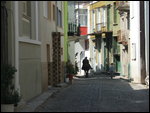

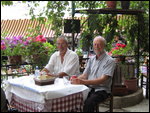

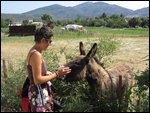
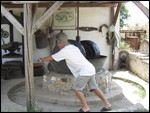
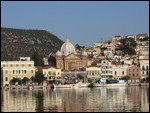
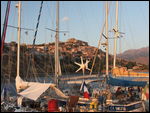
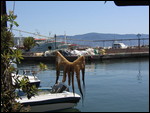
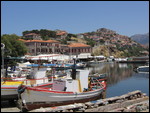
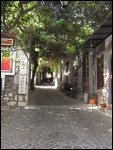
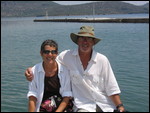
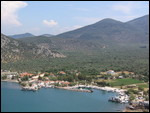
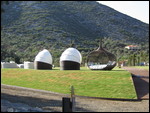





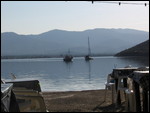
2025-05-22